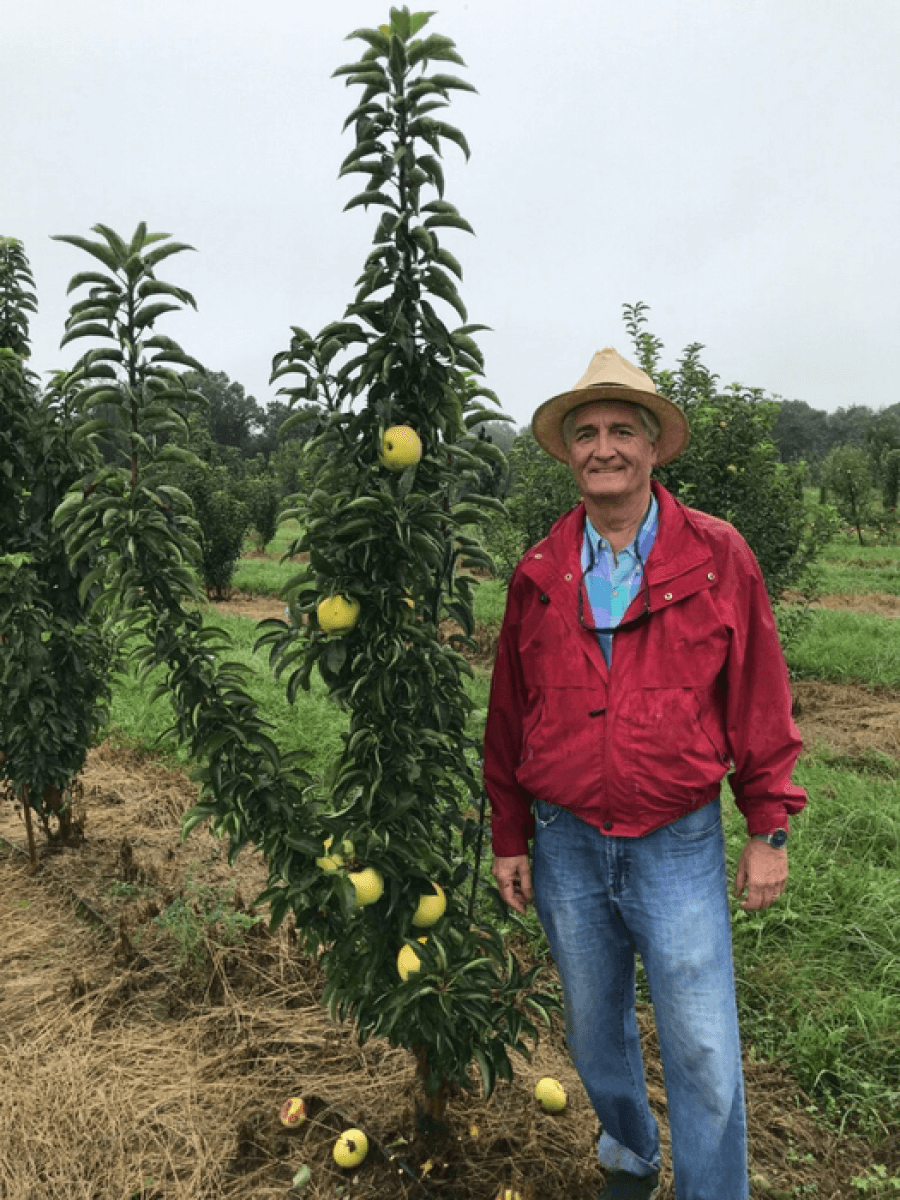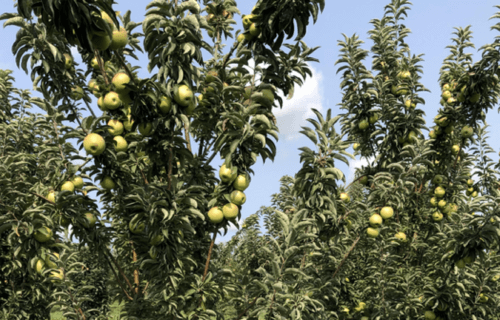COLLEGE PARK, Md. — Scientists at the University of Maryland may have just developed the “perfect apples” for American produce farmers — who are continually having to adapt to our changing world. The two new types of apples, created using a delicate combination of crossbreeding and selection, are heat-tolerant, blight-tolerant, low-maintenance, easy to harvest, and just as importantly, delicious!
Both apple varieties, one being red and the other yellow, have already been approved for patents and are currently awaiting the final grant from the U.S. Patent Office.
These innovations could help answer a growing list of problems facing the greater apple industry. Due to trees that need training, pruning, and harvesting by hand, apples have always been labor-intensive to bring to market. However, over the past decade U.S. farmers have had an especially hard time due to labor shortages, with the apple industry being among the hardest hit in that category.
Per USApple, the nonprofit apple industry association, labor shortages resulted in an average three percent drop in U.S. crop production employment annually between 2016 to 2021, while apple orchard employment fell of a cliff, declining by 22 percent a year. Simultaneously, the wages farmers must pay have increased at the exact same time the price of fresh apples has dropped off.
That’s not even mentioning climate change. Heat waves in the Pacific Northwest over the past few years have strained the nation’s largest apple producing areas. The South is getting hotter and hotter, while northern and eastern regions of the United States are experiencing shorter and warmer cool seasons. All of these climate changes point to serious uncertainty for orchard fruits tuned to cooler conditions.
The new apples and apple trees developed by the team at UMD may help farmers overcome these major obstacles.
“These trees require a lot less hand labor compared to apples that are available to growers now,” says Chris Walsh, University of Maryland professor emeritus in the Department of Plant Science & Landscape Architecture, who developed the new apples with his colleagues Julia Harshman and Kathleen Hunt, in a media release. “We can’t say they’re non-pruning, but the pruning a farmer would do is minimal on these trees.”

These new varieties grow on much shorter trees, which makes harvesting much less challenging. The trees also appear tolerant to fire blight, a destructive bacterial disease common among apple crops. Robust heat tolerance is another important feature of the new fruits. It was one of the earliest characteristics Prof. Walsh and his team bred into the apples and was a feature they originally introduced with the Antietam Blush apple in 2017. Specially designed to grow in Maryland’s warm, humid climate, the Antietam Blush was the first apple designed at the University of Maryland.
The Antietam Blush was the end result of the Tree Architecture Program that Prof. Walsh originally launched more than three decades ago by planting some 5,000 apple seedling trees from eight different commercial varieties at the Western Maryland Research and Education Center in Keedysville, Maryland. Fast forward to today, and the release of the new yellow apple called MD-TAP1 (which stands for Maryland Tree Architecture Program), and the new red apple called MD-TAP2, look primed to extend the program’s success even farther. These latest apples feature a litany of characteristics that make life easier for growers across the country.
Scientists from Michigan State University and Texas A&M University will be conducting further assessments aimed at ascertaining how well the apples grow in their climate conditions. The next step will likely include licensing the fruits to a commercial nursery that will produce the trees in large numbers and sell them directly to apple growers.
Such a nursery would most likely also have the honor of coming up with a catchy marketable name to replace the trees’ current names of MD-TAP1 and MD-TAP2.
Once these apples finally make it to market, consumers will likely see them in local fruit stands and farmer’s markets all over, as well as pick-your-own farms.
The yellow MD-TAP1 was made using a parent stock of apple marketed as GoldRush, and it looks and tastes a bit like a Golden Delicious. Its apples ripen in late September. The red MD-TAP2, on the other hand, is a child of Fuji apple stock, so it carries many of the same sweet flavor attributes. It ripens in October, considered perfect timing for the pick-your-own apple and pumpkin season.
“These apples were bred for direct to consumer sales,” Prof. Walsh concludes. “They’re not meant for the big chain stores to be shipped and stored for months. They’re meant to be eaten right off the tree.”

